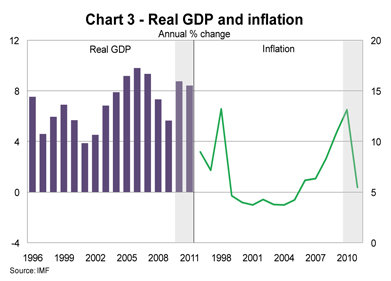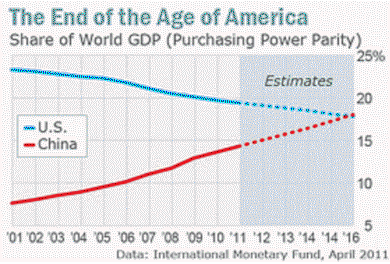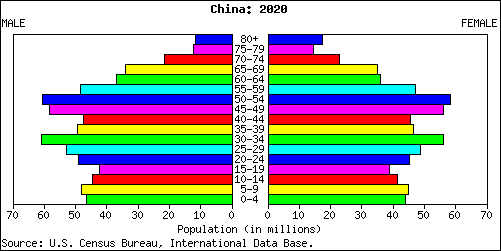Executive Summary
In modern changing business environment, companies need to have strategic policies to enable them remain competitive and profitable; they are affected by external and internal operating environments.
Globalization and international trade has opened massive opportunities that companies can venture into; when operating in the global scenes, decisions and policies developed should be responsive to the needs of the particular business environment that the company aims at venturing.
In China, external environments prevailing in the economy influence GM’s success; the situation in the economy has offered the company a chance to improve its sales and it is creating some challenges to the company.
Amidst all the changes and challenges faced by GM the management can make good of the economy by coming up with strategic policies that are responsive to the needs of the Chinese market; marketing focus should be focused on the Chinese market on its own as it has some special considerations that needs to be considered.
Introduction and background
General Motor Corporation is world’s second largest automobile company after Toyota Motor Corporation; in 2010, the company had managed to have annual revenues exceeding $175 billion and had employed about 325,000 people globally; the main operating base of the company is in the United States of America where it has its headquarters at Detroit, Michigan.
After the United states, China forms the second largest market for GM products; according to GM worldwide 2008 vehicle sales China sales was at 12.0% while that of America was 22.1%.
China is World’s largest economy after the United States; an increasing population and living conditions as well international traders frequently visiting the company support the automobile industry in the country.
Business operate in environments that have factors that influence their success positively and negatively; to remain robust and make strategic, responsive, quality and timely decisions, managers need to undertake regular external analysis of their business operating environment (General Motors Company official website 2011).
When analysis external environments, managers use P.E.S.T. (Political, Economical, Social and Technological) analysis of the external environment, P.E.S.T. analysis is a strategic management tool where managers interpolate business strengths, threats and opportunities offered by the market (Jagersma & van 2003).
This report undertakes a P.E.S.T. analysis of General Motor Corporation in China.
Political and legal environment
China is world’s fast growing economy, the growth has been facilitated by international and domestic investments; GM has to comply with legal requirements of doing business in the country which include proper legislation with licensing bodies, environmental conservation units, taxation and other legal requirements.
The country employ is a free trade policy whereby the market is the one that determines the price in the market there is little influence of the government in the trade; however, there are mixture of Communism and bureaucracy in the economy.
GM has to peddle in an environment with Communism and bureaucracy, the form of political and country management limit the company’s growth.
To keep business kicking as well as ensure that some concerns are enacted fast, then the company needs to have some bureaucratic relations with bureaucrats in the country (Carty, 2008).
China in its position as a world trade area has embarked on becoming a political neutral country and so far, no country of the world that cannot trade with her on political ground. During elections, democracy is highly adhered to and has a smooth power transition.
The government policies are geared at developing a good working environment in the.entire country. The political situation of the country is thus favourable for business.
There is a political rivalry that prevail between the Chinese and the Americans, the notion that Americans are on a higher economic wavelength than china and the fact that there is a major shift of business to Asian countries makes the two countries to have some unseen rivalry.
This affects American companies operating in Chinese markets; this is what GM if facing.
In the wake of environmental conservation, the China’s ministry of environment assisted by the ministry of industrialization has enacted policies to control the vehicles that get to the economy; the move has forced GM to produce fuel-efficient vehicles among them fast moves to make electronic vehicles, bio-diesel and highly fuel-efficient vehicles (Carty, 2008).
Economic & Financial
In the past decade the economy of china has been on a positive economic growth rate; it has seen the growth of manufacturing industry and diversion of trade from western markets to the Asian market.
According to world report of 2010, china’s per capita GDP (PPP), was ranked the 93rd in the world with $7,518; in the same year, the country had attracted a $100bn in foreign direct investments.
According to the ministry of finance the average rate of growth has been 12%, this is a positive note to GM as there are an increased market of its products; the improved market saw the company’s sales increase by 66.9 percent in 2009.
According to National Bureau of Statistics reports produced in April 15th 2011; since 1989, the Chinese quarterly economic growth rate was 9.31, with the higher rate recorded in 1992 forth quarter were the country recorded a rate of 14.2.
The reports went further and stated that the Chinese economy improved with a rate of 9.7% for the first quarter of 2011; the rate of industrial production was 14.8%. The graph below shows Chinese economic growth rate and inflation in GDP between 1996 and 2011:

(TradingEconomics.com, 2011).
From the above graph, it is clear that the Chinese economy has been on an upward growth; however since 2007 (the time that the world was hit by global financial crisis), the economy has been growing but not at a higher rate like the previous years. At the start of 2011 (January 2011), the country recorded an inflation average of 4.9% with a Gini Co-efficient of 41.5; the above rates show an economy that can support the trade of GM. After 2009, the rate of growth has taken a positive ride. In 2010, the economy surpassed Japanese to become the second largest economy: according to International Monetary Fund (report) of January 2011, the country is likely to surpass the United States economy in 2016. The graph below shows the prediction made by the IMF:

(TradingEconomics.com, 2011).
Alongside the economic growth rate the government is engaging in numerous developmental process, which include infrastructure building, and technological advancement; these improvements leads to improved living conditions and the demand for motor vehicles comes in handy.
The rate of taxation in the country is one of the lowest standing at 25% corporation rate. The rate has so far being stable and it is expected to remain the same in the near future.
With this rate of growth and economic situation, the business is likely to enjoy in the short and long term (General Motors Company official website, 2011).
Global financial crisis has an effect on Chinese economy; there have been decrease in trade in the country as it struggle to come out from the crisis; other than Chinese markets, there have been reduced business from other international players of whom GM has been trading its products to.
In the wave of global crisis the company made some improved sales, it is expected that the sales would have been much higher had it not for the crisis.
Many Chinese companies especially the construction industries are targeting international markets to make businesses; their expertise and quality works have made them win a number of contracts mostly in developing countries.
The equipments that they are using are mostly fetched locally thus, GM has stood to benefit the developments (Carty, 2008).
Social and cultural environment
China is a metropolitan country with the China’s and other Asians origins being the majority; according to 2009 census, the country had a population of 1.33 billion people becoming the most populated country in the world.
The country forms about a fifth of the world’s population; the countries fertility rate is 1.7; with the fertility rate, the county is expected to have approximately 1.5 million by 2012.
Chinese has a population that has high living standards, the improved standards coupled with improved infrastructures has made the demand for automobiles increase; GM being one of the companies in the sector it stands to benefit the increased demand of vehicles. According to 2010 unemployment rate in China is 4.2%; the rate is lower than the rate generally required by international labor laws; this shows an increased business to the company, the labor force is 819.5 million.
The attitude that the Chinese people have adopted is the attitude that embraces change and they have no ill heart for foreigners; however, when it comes to products from an American company, the attitude is rather negative.
GM has to fight to create a positive attitude so as it can sell its products effectively (PriceWaterhouseCoopers, 2008).
The youthful population of China offers the company some low labour that it can produce its products at relatively lower prices than in other places. GM has been able to tap the reduced low production advantage from the highly skills Chinese, other than the labour force, the company is using the local people to come-up with new products in response to the believe and culture of the people.
In the near future, the country is likely to have a concentration of the population around middle age that is more likely to buy cars; this is market for the economy (TradingEconomics.com, 2011). The below graph shows the future concentration of the future Chinese population:

(TradingEconomics.com, 2011).
China has a high context cultural system; this is a culture where in-group communication is through few chosen words that make sense to members of the group. An outsider listening to such talks cannot grasp what is said easily.
The culture does not change fast and have an accepted common background that explains issues; to understand the culture GM employees Chinese in major areas that needs the understanding of the people’s culture (Ambler, Morgan & Chao 2008).
Technological
China is among the countries that have the most advanced technology. Mitlez, 2004 in his book Technology and Culture notes that the countries that is doing well in the technological innovation. It is developing its own technology as well embracing imported technologies.
High technology assist in reduction of cost of production; this means that a business in China is more likely to produce quality and quantity at a very low price compared to other places in the world.
The technology of the country has been to the advantage of GM, the company has been able to get cheap production methods like recycling, waste management, process automation, and the use of information technology to interpolate different issues (Mitlez, 2004).
The growth in technology has facilitated GM marketing and sales practices; the company is able to advertise and market its products in the economy using Medias like print, electronic, billboards and social Medias; so far, there are minimal restrictions to advertising in the country.
Implications for GM’s current operations in China
The external environment operating in China have been a benefit to GM branch in the country, however, there are some challenges that the company is facing as a result.
The main advantage that the company has benefited is from economic development in the country and the improved technology; the operating cost in the country is manageable enabling the company to produce products that are affordable and competitive.
The major challenge affecting GM in the Chinese market is high competition from international companies like Toyota and Mitsubishi; on the other hand, domestic Chinese companies are coming up (Optima News, 2011).
Recommendations
To remain competitive in an economy like the Chinese, GM management has the role of developing strategies that can make its products stand out and become competitive.
Some of the policies include innovation and inventions, total quality management tools (with the main aim of reducing costs), continuous marketing research (to enable the company establish the line of growth that it can focus on for its products), and continuous improvement of their computer systems so that they can offer sound advice on product development.
As population changes, the needs of the people also change; GM should ensure it is in the forefront noting the change and effecting necessary measures (Jagersma & van 2003).
Conclusion
China forms the second largest market for GM products; the improved sales have been facilitated by strategic decisions made by GM’s management as well as favourable working environment in the country.
Low lab or costs and growth in economic environment in the country are some of the benefits that GM gets from the country’s external environment.
Appendix
The chart below summarizes the external analysis (PEST) of GM in China:
References
Ambler, T., Morgen,W., & Chao, X.(2008). Doing Business in China. New York: Taylor & Francis.
Carty, S. S. (2008). Small cars sell, but GM, Ford suffer as gas prices rise. Web.
General Motors Company official website.(2011). General Motors Company. Web.
Jagersma, P.K. & van Gorp, D.M. (2003). Still searching for the pot of gold: Doing business in today’s China. Journal of Business Strategy, 24 (5), 27-35.
Mitlez, S. ,2004. Technology and culture. Michigan: Dearborn.
Optima News. (2011). Web.
PriceWaterhouseCoopers (2008). Global automotive perspective 2008. Web.
Scott, M., & Lewis, C. (2005) China: Its History and Culture. New York: McGraw-Hill.
TradingEconomics. (2011). China GDP Grows 9.7% in Q1. Web.